"White Plan" - the first blitzkrieg experience
The Wehrmacht tried to crush the main forces of the enemy with the first blow, by achieving maximum concentration of forces on the main thrusts. 3 April 1939, the original plan of the war with Poland, the plan "Weiss" - the White Plan, developed by the headquarters of the German Armed Forces, was sent to the commander of the ground forces, air force and navy. May 1 commanders were required to provide their views on the war with Poland. The term of the attack on the Polyakov was also named - 1 of September 1939 of the year. By April 11, the Supreme Command of the Armed Forces (OKV) developed the “Directive on the uniform preparation of the Armed Forces for the war on 1939-1940,” it was signed by Adolf Hitler.
The disposition of opposing forces on 31 August 1939 of the year and the Polish campaign 1939 of the year.
The basis of the White Plan was the plan for a “blitzkrieg” - the Polish armed forces intended to divide, surround and destroy with rapid, deep strikes. The armored units and the Luftwaffe were to play a big role in this. The main attacks were to be delivered by Army Group North from Pomerania and East Prussia and South from the territory of Moravia and Silesia, they were to defeat the main forces of the Polish Army west of the Vistula and Narev rivers. The German Navy had to block Polish bases from the sea, destroy the Polish Navy, and support ground forces.
The rout and seizure of Poland was planned not only to solve the problem of Danzig and unite the territories of the two parts of the Reich (East Prussia was an enclave), but also as a stage in the struggle for world domination, the most important step in the implementation of the Nazi "eastern program", the expansion of "living space" the Germans. So, 23 May 1939, at a meeting with the military, Hitler said: “Danzig is by no means the object for which everything is being done. For us it is about expanding the living space in the East and providing food, as well as solving the Baltic problem. ” That is, there was no talk only about defeating Poland and solving the problem of Danzig, there was no “Polish corridor”, from the very beginning they planned to deprive Poland of their statehood, they had a policy of genocide and plunder of resources in favor of Germany.
In addition, the territory of Poland was to be an important base for striking the Soviet Union. The defeat of Poland was to be the first step to prepare a strike against France.
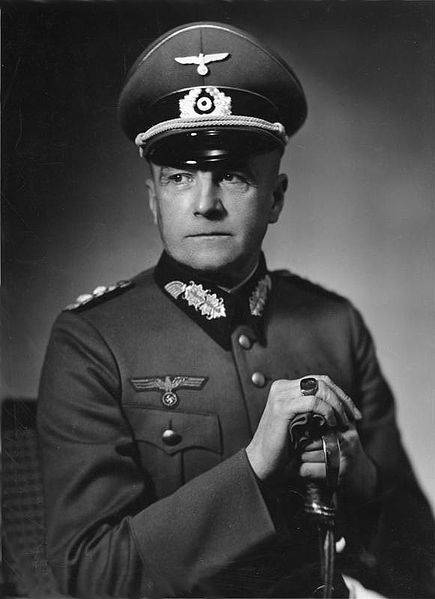
Commander-in-Chief of the ground forces, Walter Brauchitsch.
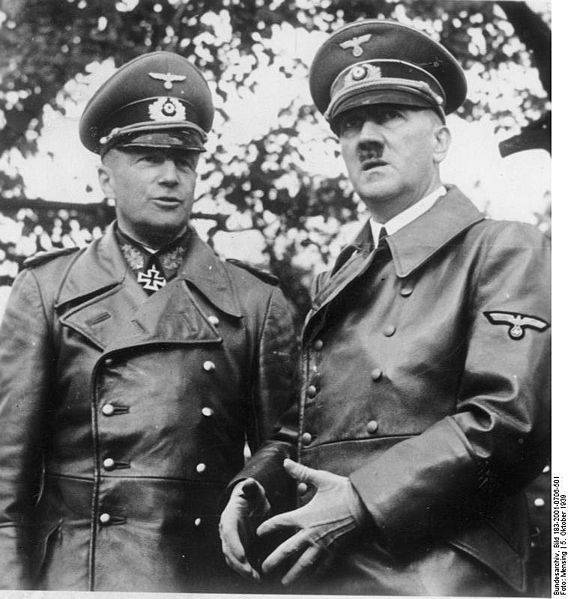
Hitler and Brauchitsch on the October 5 parade of the year 1939.
The seizure of Czechoslovakia and Memel by Germany sharply complicated the military strategic position of Poland, the Wehrmacht was able to deliver strikes from the north and from the south. With the seizure of Czechoslovakia, he strengthened the Wehrmacht and its capabilities, seizing powerful Czech industry and quite a few weapons, technology.
The main problem for the military-political leadership of Germany was the need to avoid a war on two fronts - a strike by the French army from the west, with the assistance of England. In Berlin, it was believed that Paris and London would continue to follow the course of "appeasement", the Munich course. So, Halder, the chief of the ground forces general staff, wrote in his diary, Hitler is sure that Britain will threaten, stop trading for a while, maybe he will recall the ambassador, but he will not enter the war. This is confirmed by General C. Tippelskirch: "Despite the existing Franco-Polish alliance and the guarantees that England gave Poland at the end of March ... Hitler hoped that he managed to confine himself to a military conflict with Poland alone." Guderian: "Hitler and his foreign minister Ribbentrop were inclined to believe that the Western powers would not dare to start a war against Germany and therefore they have a free hand to realize their goals in Eastern Europe."
In principle, Hitler was right, Paris and London "saved face" by declaring war on Germany, but in reality they did nothing to help Poland - the so-called "strange war." And the opportunity was left to settle without a blood “war” between Germany and France, England.
Hitler also played on the anti-Soviet sentiments of the elites of France and England, imagining the attack on Poland as a preparation for an attack on the Union, hiding his next stage on the path to dominance in Europe - the defeat of France. In addition, the fast, lightning defeat of Poland, was supposed to prevent the real involvement of the Anglo-French forces in the war with Germany. Therefore, to cover the western border of Germany, a minimum of forces and means was allocated, without tanks. Only 32 divisions were deployed there, with 800 aircraft - Army Group C, of which only 12 divisions were fully equipped, the rest were sharply inferior in their combat capabilities. They could be used only for positional warfare, and then in secondary areas. These divisions were supposed to hold defense on the border with a length of about 1390 km, with Holland, Belgium, Luxembourg, France, the fortified Siegfried line was still under construction and could not be a reliable support.
By the beginning of the war in Poland, only France on the eastern border had 78 divisions, more than 17 thousand guns and mortars, about 2 thousand tanks (excluding light armored vehicles), 1400 airplanes of the first line and in reserve 1600 aircraft. In the early days, this grouping could be significantly strengthened. Plus support for the Navy and the Air Force of England.
German generals were aware of this and were very nervous, so Manstein wrote: “The risk taken by the German command was very great ... no doubt that the French army from the first day of the war was many times superior to the German forces operating on the Western front” .
German soldiers on the border of Poland.
The task of the crushing defeat of the Polish army, the maximum concentration of forces and means
The task of total defeat and destruction of the Polish troops was finally formulated by A. Hitler at a meeting with the supreme generals 22 of August 1939 of the year: “Purpose: The destruction of Poland, the elimination of its manpower. It is not about entering a frontier or a new frontier, but about destroying the enemy, to which one should unswervingly strive by any means ... The winner is never judged or asked ... ”. It begins with these words and the Directive on the plan of attack on Poland by the commander-in-chief of the ground forces, Colonel-General Brauchitsch: "The aim of the operation is the destruction of the Polish Armed Forces."
To this end, the Wehrmacht maximally concentrated its forces and means against Poland: all the best-prepared divisions, all tanks, 1 and 4 air fleets were directed against it. By 1 September 1939 divisions were concentrated in full combat readiness (a few more were in reserve - 54 divisions were deployed against the Poles): in Army Group North, 62 and 3 Army, in Army Group South, 4, 8 , 10-I army. The total number of invasion forces numbered 14 million, 1,6th. artillery shells, 6 aircraft and 2000 tanks. In addition, the Polish command eased the task to the Wehrmacht, dispersing its forces across the entire border, trying to cover the entire border, instead of trying to close the main directions of possible attacks tightly by concentrating on them the maximum possible number of forces and means.
Gerd von Rundstedt, commander of Army Group South, focused on: 21 infantry division, 4 tank, 2 motorized, 4 light, 3 mountain rifle divisions; in reserve still 9 divisions, more 1000 tanks. Army Group Commander North Theodor von Bock had 14 infantry divisions, 2 tank, 2 motorized, 1 cavalry brigade, in reserve 2 division. Both army groups struck in the general direction of Warsaw, the Vistula, the Army Group South was attacked by the 10-I army, the weaker 8-I and 14-I supported it with offensive actions. In the center of the Wehrmacht concentrated relatively small forces, they had to distract the enemy, misleading him, regarding the main directions of attack.
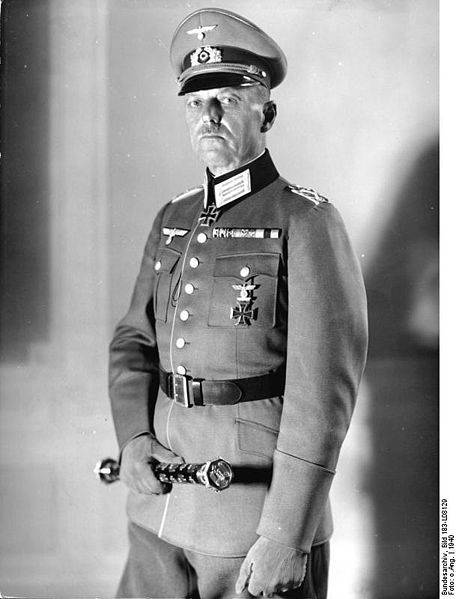
Gerd von Rundstedt, led by Army Group South.
As a result, the Wehrmacht managed to concentrate on the directions of the main attacks overwhelming superiority: 8-multiple in tanks, 4-multiple in field artillery, 7-multiple in anti-tank artillery. In addition, measures were successfully taken to disguise large forces, including mechanized ones.
Planned maximum rates of offensive armored and motorized divisions, they were attributed not to be distracted by the final destruction of the defeated Polish units, assigning this task, as well as covering the flanks and rear of the infantry divisions. They were supposed to prevent the Polish command from taking measures to mobilize, concentrate, regroup, and seize the most important economic areas intact. August 14 Hitler set the task of defeating Poland in the shortest possible time - 8-14 days, after which the main forces were to be released for possible actions on other fronts. 22 August Hitler declared: “A quick outcome of military actions is needed ... The main thing is speed. Persecution until the complete destruction. "
An important role in disrupting the mobilization measures of the enemy was assigned to Aviation, she had to strike at Polish mobilization centers, disrupt the movement on the railways, along the highway, prevent the Poles from concentrating the force grouping in the offensive zone of the 10th Army, in Western Galicia, west of the Vistula; disrupt the organization of defense activities in the offensive zone of the Army Group North at the Vistula-Drevents and Narew lines.
Destruction of the enemy by reach and surroundings: The White Plan was based on the idea of a deep reach, encirclement, destruction of the main forces of the Polish armed forces west of the Vistula and Narev rivers. This plan was brought to life by a successful strategic position - the ability to deploy troops in the territory of the former Czechoslovakia. By the way, Slovakia also allocated a couple of divisions for the war with Poland. So their Poles have angered their territorial claims.
As a result, the Wehrmacht advanced by two flank groups that were far apart, almost completely abandoning major operations in the center.
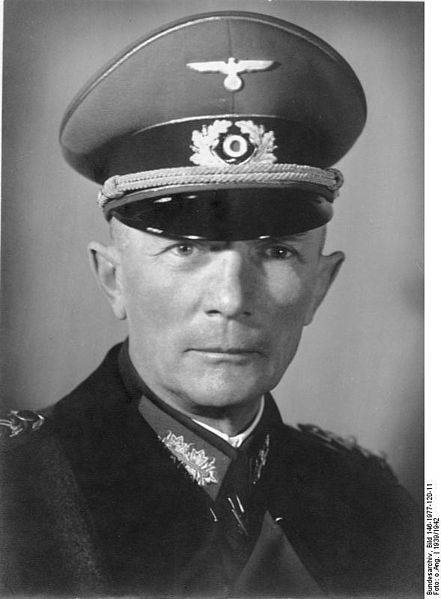
Theodore von Bock, commander of Army Group North.
Diplomatic cover, disinformation measures
To be able to deliver the most sudden blow - Berlin hid its intentions even from its allies, Rome and Tokyo. At the same time secret negotiations were held with England, France, Poland, declarations of adherence to the idea of peace were proclaimed, and even the party congress appointed for September was called the "congress of the world."
In order to intimidate the French to keep them from entering the war, Hitler pointedly visited the Siegfried Line at the end of July, although the command and Hitler knew that she was not ready to raise the hype on the radio in the media about its full readiness and inaccessibility. Even the photos of the “new” fortifications were still old fortifications - up to the 1933 year. Rumors were spreading about the concentration of large forces in the West. As a result, in Warsaw they "pecked" and believed "that if the war starts, the main forces of Germany will fight in the West, there will be auxiliary forces against it and that even they will be able to conduct an offensive operation against East Prussia.
Putting pressure on Warsaw about Danzig and the construction of the railway and highway in the “Polish corridor”, Berlin simultaneously talked about the general direction of the struggle - against the USSR, about a possible joint campaign to the East, the Poles were promised Ukraine and access to the Black Sea. Depriving Poland in such a way the only way to survive is to agree to the help of the USSR, which he had repeatedly offered, before the conclusion of the pact with Germany.
On the border with Poland, the construction of defensive structures was launched, putting the Poles on their guard. This was one of the largest and most costly measures to mislead Poland. Since the spring of 1939, the so-called “Eastern Shaft” was built and the pace of construction was quite high, entire Wehrmacht divisions participated in the construction. At the same time, the construction explained the high concentration of Wehrmacht forces on the border with Poland. The transfer of additional units to East Prussia was masked by preparations for the 25 anniversary celebration of the victory over the Russian army near Tannenberg in August 1914 of the year.
Polish prisoners of war in a temporary German camp in Poland, September 1939.
Even the latent mobilization began only on August 25, it was considered that the available forces would suffice and therefore the full deployment of all forces could be neglected. Therefore, it was decided to temporarily refrain from creating an army reserve. Territorial divisions of Landwehr. Aviation deployment was planned only on the very first day of the war.
As a result, even before the official mobilization, Berlin was able to transfer and deploy for the invasion 35% military ground forces, 85% tank, 100% motorized and light divisions, only 63% allocated to the war with Poland. In the first operations against Poland, 100% of the motorized and 86% of the tank forces and the entire 80% of forces planned for the entire military campaign against Poland could participate. This allowed the first strike to be carried out with all the might of the main forces, while the Poles fulfilled only the 1% mobilization plan by September 60, deploying the 70% troops.
The campground of the German troops in front of the border with Poland shortly before the invasion of Germany. Shooting time: 31.08.1939-01.09.1939.
German Junkers U-87 (Ju-87) dive-bombers in the skies of Poland, September 1939.
Сonclusion
In general, the plan was executed, but the reasons for this, not only because the Wehrmacht was great, there are other fundamental reasons: the weakness of Poland itself. The Polish elite completely failed the prewar stage, both politically and diplomatically, and militarily. They did not seek an alliance with the USSR, they finally became his enemy, did not make concessions on the issue of Danzig and the construction of the highway and railway to East Prussia - although there was a possibility that Berlin would limit itself and eventually Poland would, as she wanted, become a satellite of Germany , in the war with the USSR. They chose the wrong defense strategy - dispersal of forces across the entire border; before the war, they did not pay enough attention to aviation, air defense systems, and anti-tank artillery.
The Polish military-political leadership behaved disgustingly, not using every opportunity to fight, abandoned its people and army, while they were still fighting, fled, thereby finally breaking the will to resist.
Berlin was lucky that people in Paris were not the type of de Gaulle, the blow of the French army would put Germany on the brink of disaster, the path to Berlin was actually open. We would have to urgently transfer forces to the West, stopping the advance of the French army, the Poles would continue to resist. Hitler would get a real war on two fronts, a protracted war to which Germany was not ready, she would have had to look for a way out in diplomacy.
German soldiers inspect abandoned one-tower Polish tank "Vikkers", it is distinguished from the usual large air intake cage with grille
Polish 7ТР tanks, captured by the Germans, pass by the main stands at the parade on the occasion of the first anniversary of the surrender of the Polish troops 6 in October 1940 of the year. Governors Hans Frank and Field Marshal Wilhelm Liszt are present in the high stands. Shooting time: 06.10.1940. Location: Warsaw, Poland.
The German army is marching through captured Warsaw, the capital of Poland.
Sources of:
Documents and materials on the eve of the Second World War. 1937-1939. In 2's TM, 1981.
Kurt von Tippelskirch. History World War II. Blitzkrieg. M., 2011.
Manstein E. Lost victories. Memories of field marshal. M., 2007.
Solovyov B.G. The suddenness of an attack is an instrument of aggression. M., 2002.
http://militera.lib.ru/db/halder/index.html
http://militera.lib.ru/h/tippelskirch/index.html
http://militera.lib.ru/memo/german/guderian/index.html
http://waralbum.ru/category/war/east/poland_1939/
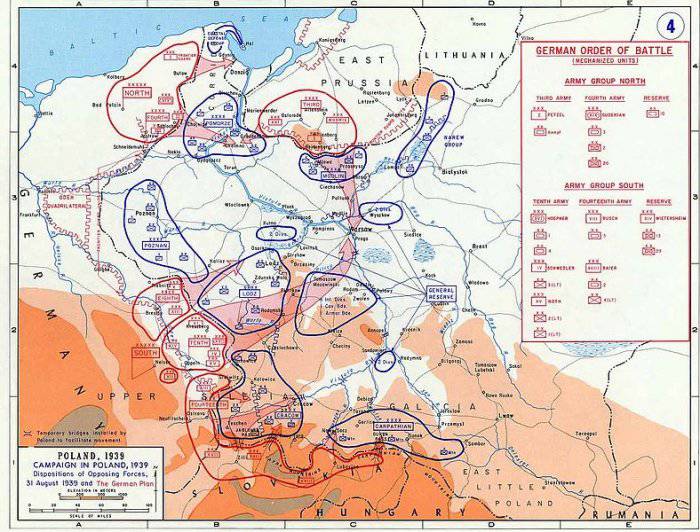
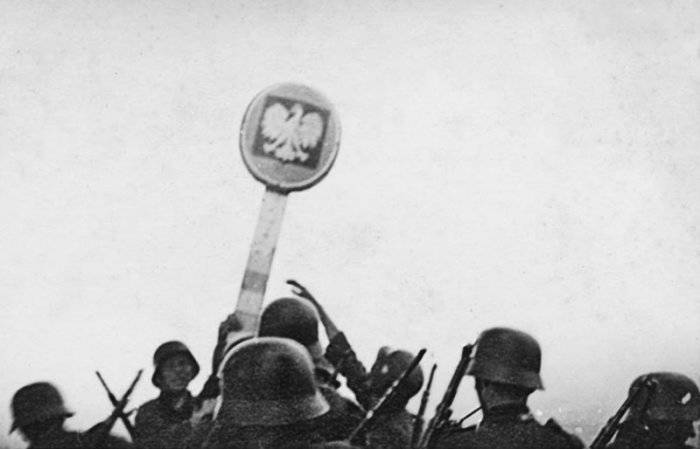
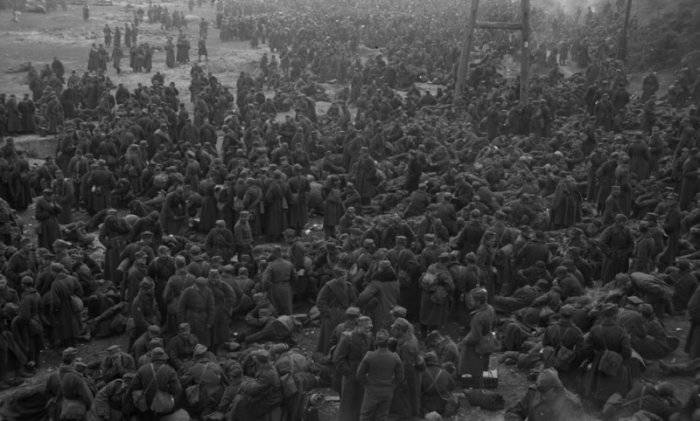

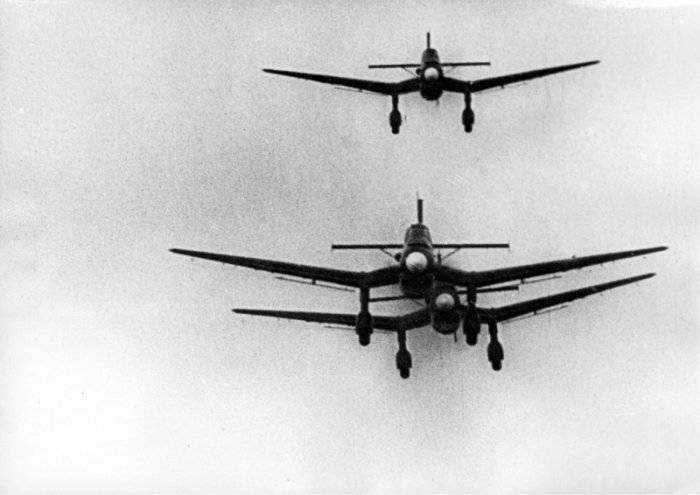
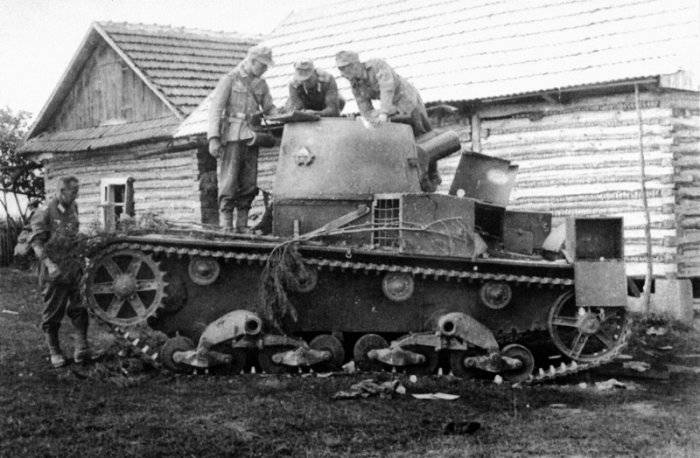
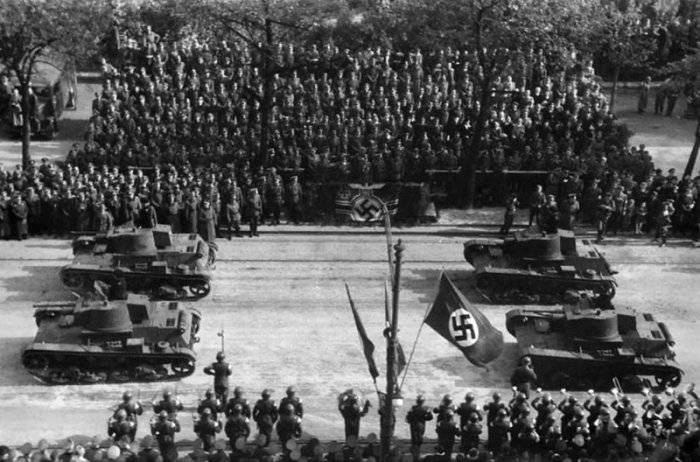
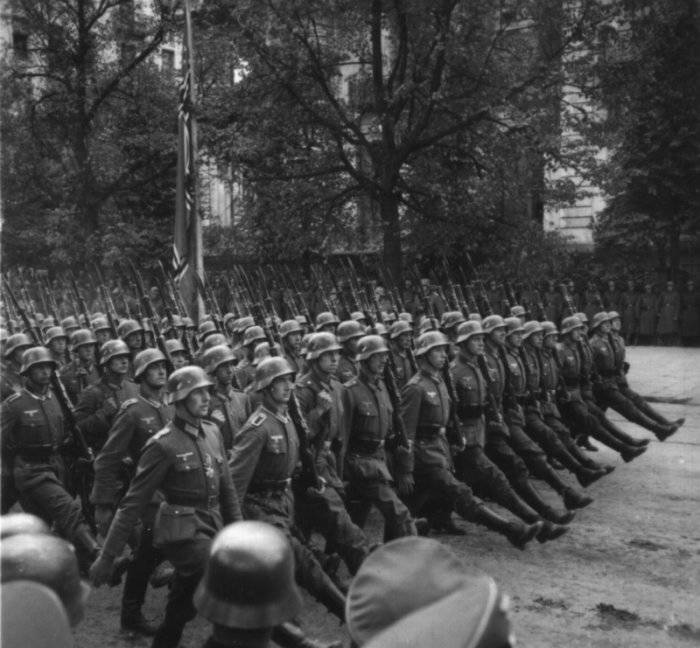
Information